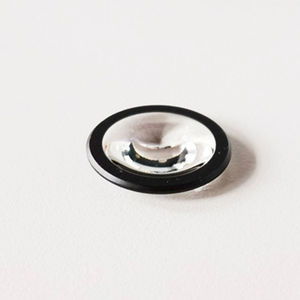
Aspherical lens element glassprecision
Add to favorites
Compare this product
Characteristics
- Material
- glass
- Optical characteristics
- aspherical
- Applications
- precision
Description
Traditional spherical lens will produce spherical aberration. Spherical lenses have an unsatisfactory property (called spherical aberration), which leads to stronger diffraction the farther the light rays are from the optical axis of the lens, and spherical aberration leads to decreased image sharpness. The shape of an aspheric lens is optimized and has excellent imaging characteristics. The main advantage is the ability to correct spherical aberrations. Aspherical lenses can effectively eliminate not only spherical aberrations, but also other forms of aberrations produced by lenses. Aspherical lenses are designed with a single element, helping to reduce the number of lenses in multi-lens optical components. In other words, aspherical lenses have more complex surfaces than traditional lenses that have spheres.
Description of Precision Polishing Aspherical Lens
Ecoptik's aspherical drowning and polishing process is similar to that of spherical lenses. First, the shape of the surface is determined by inundation, and then the roughness of the aspheric surface is guaranteed by polishing. The shape deviation is reduced in the process of correcting polishing. Next comes the desertification process. In the polishing process of aspheric surface, the change of curvature radius of aspheric surface is mainly solved. Through continuous fine polishing, adjustment, and other repeated operations, to ensure that each lens meet the accuracy requirements.
Catalogs
No catalogs are available for this product.
See all of ECOPTIK‘s catalogsRelated Searches
- Glass lens element
- Optical filter
- Optical prism
- Spectrum lens element
- Optical window
- Colored optical filter
- Optical lens element
- Glass optical prism
- Visible lens element
- Round mirror
- BK7 lens element
- Convex array lens element
- Laser lens element
- Crystal lens element
- Silica lens element
- Glass mirror
- Spherical lens element
- UV lens element
- Round optical window
- Fused silica lens element
*Prices are pre-tax. They exclude delivery charges and customs duties and do not include additional charges for installation or activation options. Prices are indicative only and may vary by country, with changes to the cost of raw materials and exchange rates.


